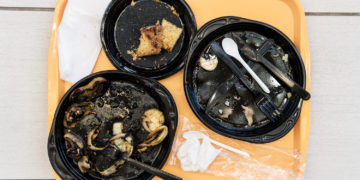The promise is finally practical. Satellite-to-cell connectivity now allows a normal smartphone to send and receive basic messages when there is no mast in sight. Commercial pilots have matured into real services, national trials are under way across Europe, and Apple’s iPhone family has expanded satellite features country by country. Data and voice are next, with operators publishing roadmaps rather than science-fiction. The question for readers is no longer “if” but “how” and “how much”.
What exactly is satellite-to-cell, in plain terms?
Satellite-to-cell (sometimes called direct-to-device or non-terrestrial network access) lets an unmodified 4G/5G handset connect directly to a low-Earth-orbit satellite that behaves like a mobile tower in the sky. This is different from legacy satphones that needed bulky, dedicated handsets. The technical foundation sits in 3GPP Release 17, which added the first standardised requirements for non-terrestrial networks and defined how ordinary devices could latch onto satellites for NR (5G) and NB-IoT services.
Point-clé: Standards matter. Release 17 is the hinge that turns experiments into interoperable services.
Where does it work today, and what’s coming next?
In the United States, T-Mobile’s “T-Satellite with Starlink” offers satellite texting in most outdoor areas where you can see the sky. The company quotes more than 500,000 square miles in the U.S. with no terrestrial coverage, which the constellation aims to fill.
In Europe, Vodafone and AST SpaceMobile demonstrated the world’s first satellite video call using a standard smartphone in January 2025, with plans to extend service to European customers later in 2025 and 2026. Japan has seen its own firsts through Rakuten’s partnership with AST SpaceMobile. These are not lab curiosities anymore, they are real milestones that preview commercial rollouts.
Apple runs a parallel track: its Emergency SOS via satellite is live in a wide list of countries across Europe, North America, Japan and others, while Messages via satellite (off-grid, non-emergency texting) is currently limited to the U.S., Canada and Mexico. Availability continues to expand and the fine print is worth checking before a trip.
Point-clé: Coverage is a patchwork. Emergency support is broad; everyday satellite messaging remains region-specific.
How much does it cost?
Pricing varies by operator and by feature.
- U.S. (T-Mobile + Starlink): Satellite texting is included with certain premium plans or available as an add-on around ten dollars per month. Independent reporting during the public beta cited a post-beta price near fifteen dollars for T-Mobile users and higher for other carriers. Always confirm current plan terms.
- Apple satellite features: Apple extended the free period for iPhone 14 and 15 satellite capabilities, pushing potential billing to around late 2026 for eligible devices activated in supported countries.
- Europe (Vodafone/AST and others): Public tariffs have not been broadly published at the time of writing; operators are signalling phased introductions through 2025–2026.
Point-clé: Expect texting-first bundles now, with priced data tiers to follow as capacity scales.
Which phones are compatible?
For carrier-provided satellite messaging, compatibility lists are growing. T-Mobile says more than 60 phones are supported. Apple broadened access with iOS 18.5 so that iPhone 13 models can use carrier satellite messaging where available, while Apple’s own satellite features remain for iPhone 14 and newer. Android support depends on each operator’s list and firmware updates.
Point-clé: “Unmodified” does not mean “any.” Check your exact model and software version against your carrier’s current list.
How do you actually connect in an emergency?
On iPhone, you must be outside with a clear view of the sky and horizon. The interface guides you to point your phone toward the satellite and keep moving slightly until the link stabilises. Emergency SOS via satellite routes messages to responders; in supported countries it also maps local emergency short codes. If you cannot place a standard call, the phone will fall back to text over satellite. Practice with Apple’s built-in demo before you need it.
Point-clé: Line-of-sight is everything. Trees, mountains and buildings block satellites far more than they block ground towers.
Will we really get voice and broadband data?
Yes, but in phases. AST SpaceMobile and Vodafone completed a space-based 5G call and later demonstrated a satellite video call on a stock smartphone. Reported peak speeds reached into the hundreds of megabits during trials, although mass-market plans will throttle individual sessions to preserve capacity. Starlink’s Direct to Cell advertises a path from messaging to data and voice as more than 650 satellites come online. The overarching direction is clear: texts now, then voice and modest data, then richer apps as spectrum and satellites scale.
Point-clé: Think “emergency-grade and essential-grade” first. Media-heavy workflows still require careful optimisation.
What are the practical limits I should expect?
- Outdoors only: Most services require open sky. Indoors is unreliable.
- Latency and speed: Texts can be delayed. Early data tiers will be narrow.
- Country rules: Features and frequency use depend on national approvals. Apple’s Messages via satellite is currently North America-only.
- Device caveats: Some iPhone models purchased in specific regions do not support satellite features.
How can reporters capture, edit and file from places with no internet?
Field reporting in dead zones is about triage: prioritise safety, then words, then pictures, then attachments. Here is an off-grid workflow you can adopt today using only a phone and a lightweight kit.
1) Prepare for low-bandwidth before you travel
- Pre-install offline tools for note-taking, photo editing and file compression.
- Create export presets that cap photo long edge at 1280–1600 px and compress under 300–400 KB per image.
- Strip EXIF where appropriate to minimise size and protect sources.
- Write templated cutlines and slug lines you can paste into texts.
2) File the story skeleton over satellite texting
- Send the lede and standfirst first. Keep each message self-contained.
- Chunk your copy into short texts that an editor can stitch on the desk.
- Attach coordinates as text rather than maps when you must share location.
When you need to package a quick image for social or for the desk, overlays help. In the mid-field of your edit, you can add text to image to place a short caption or context bar at the top, then export the smallest acceptable JPEG. If you are preparing three variants for different platforms, add text to image again with alternate line breaks for mobile readability. For a fast explainer card, add text to image to place a headline and credit, using a single system font to avoid embedding overhead. Mentioning one practical option for speed, Adobe Express can be useful once you regain a thin connection, because its templates let you reflow the same caption across multiple sizes quickly.
3) Move pictures without burning your satellite budget
- Prioritise one hero shot per update.
- Use lossy JPEG at 70–75 quality and resize aggressively.
- Batch later over terrestrial or Wi-Fi when you come down from the ridge.
- If your operator enables satellite-ready apps, test which messaging apps they bless for small images and which silently fail. T-Mobile, for example, notes “select satellite-ready apps” during its rollout.
4) Keep a resilience mindset
- Carry power redundancy and a small solar panel in mountain or desert work.
- Text your movement plan to the desk whenever you re-acquire link.
- Use the iPhone Satellite Connection demo to train your team on pointing and patience.
Point-clé: Your copy travels further than your pixels. File the words first, compress the visuals, and treat images as progressively enhanced.
Which gestures improve your chances of connecting?
- Go outside. Face clear horizon.
- Hold the phone at chest to eye height. Slowly pan until the on-screen indicator shows a lock.
- Keep movements small. Do not pocket the device while sending.
- Avoid trees, canyons and vehicles with coated glass; step away a few metres if needed.
These are not folk rituals, they are the exact behaviours Apple’s support materials recommend.
What should we watch in 2025–2026?
- European launches: Vodafone and partners intend phased service introductions across Europe through 2025–2026.
- Operator tie-ups: Lynk’s planned merger with Omnispace hints at broader direct-to-device coverage footprints with dozens of MNOs.
- iPhone ecosystem shifts: Apple extended the free period for satellite features and keeps expanding feature availability by country.
- Public-safety pilots: Eastern Europe is trialling satellite-to-cell for resilience where terrestrial networks are fragile.
Point-clé: The centre of gravity is moving from demos to tariffs and service maps. Expect clearer consumer offers as constellations fill out.
FAQs
Is satellite-to-cell the same as owning a satphone?
No. You use your normal handset and number, with texting first and data later. Satphones still win for sustained bandwidth or specialist networks.
Can I send photos today over satellite-to-cell?
Sometimes, but manage expectations. Early offers prioritise texts and only allow small, operator-approved images in select apps.
Does it work indoors or in cities?
Reliably, no. You usually need open sky. Buildings and trees block weak satellite signals.
Will my iPhone work abroad?
Emergency SOS via satellite is widely available; Messages via satellite is limited to North America for now. Always check Apple’s latest country list before travel.
When will I get voice and proper data?
Trials have already shown 5G calls and even video calls from stock phones. Commercial voice and data will follow as satellites and spectrum ramp up in 2025–2026.













































































